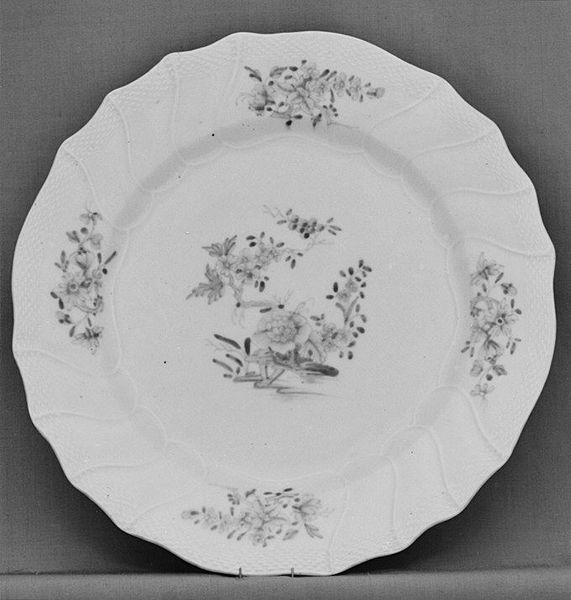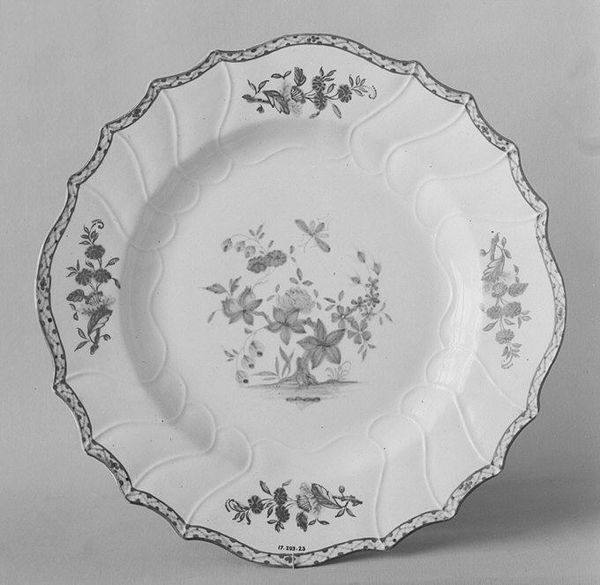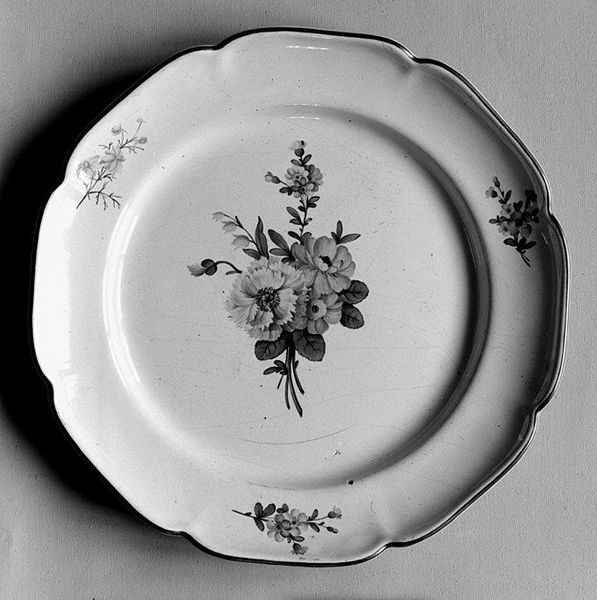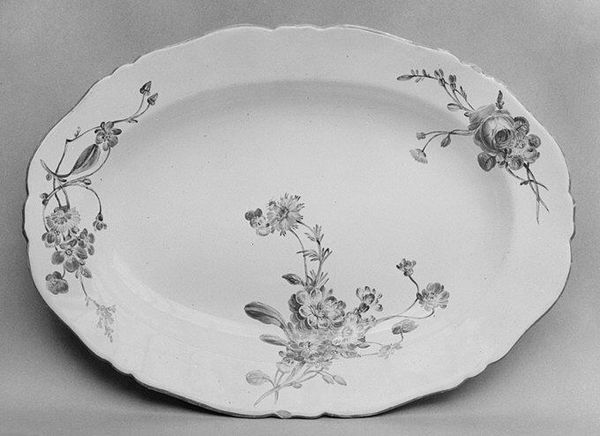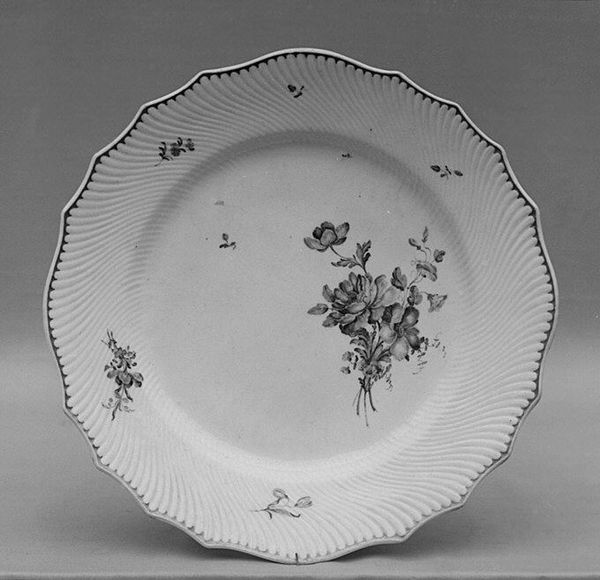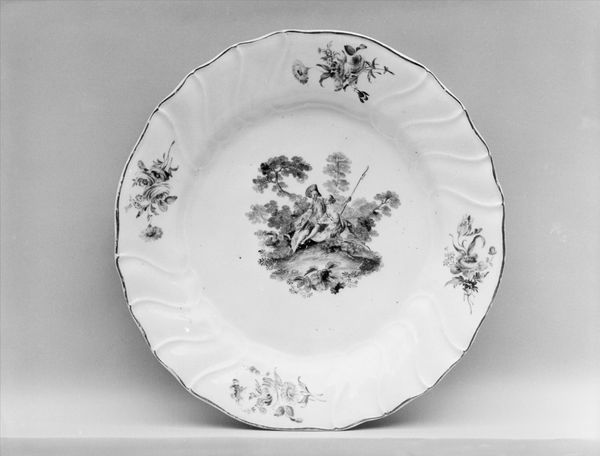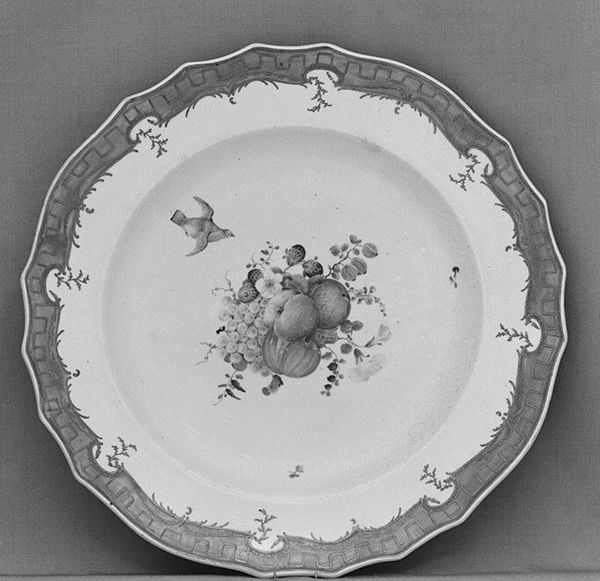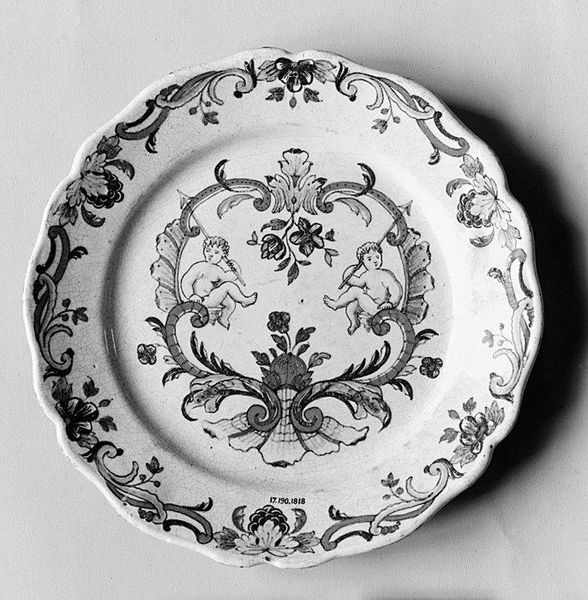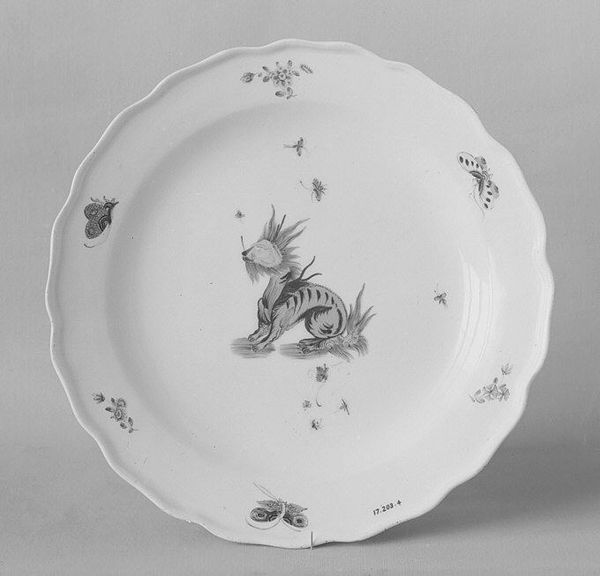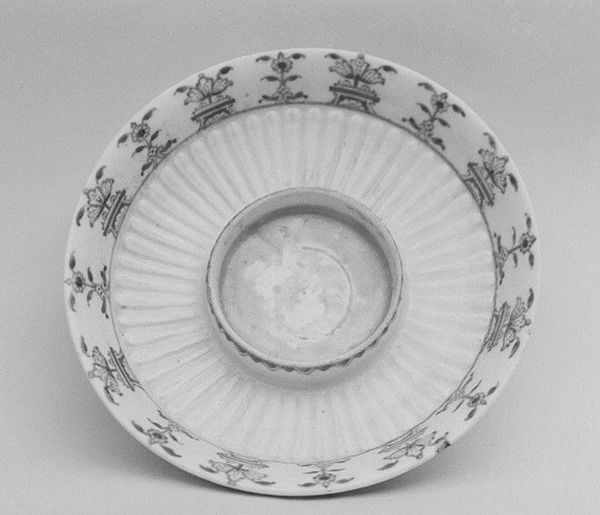
Dimensions: Diameter: 9 3/4 in. (24.8 cm)
Copyright: Public Domain
Editor: This is a porcelain plate made in Tournai sometime between 1770 and 1790. The floral design is so delicate, almost like a detailed print. It seems so simple and elegant, but there's also this hint of opulence. How do you interpret this work within its historical context? Curator: Plates such as this were part of a much larger phenomenon of porcelain production in the 18th century, fueled by colonial extraction. These objects became status symbols in Europe. How does knowing this change the way you see the floral design? Does it still feel quite so simple? Editor: That's a good point! It’s no longer just a pretty design. There’s an implied story about global trade and the resources and labour that went into it. I suppose the very fact that it's porcelain, a luxury material at the time, is significant. Does the Rococo style itself tie into this? Curator: Absolutely. The Rococo style, with its emphasis on lightness and asymmetry, often masked the harsh realities of its production. The idealized beauty on the surface obscures the complex socio-economic systems at play. How can we use objects like these to talk about inequality? Editor: Maybe by emphasizing how these pieces ended up mostly in the hands of wealthy elites. We can also explore the artistic labour that's often not discussed in traditional art history. What's most interesting to you about these sorts of pieces? Curator: The deceptive nature. On the surface, it's an object of beauty, but underneath, it embodies power dynamics, and exploitative labor. Editor: Thinking about it that way, I feel I am much more aware now of what a piece of porcelain can tell us.
Comments
No comments
Be the first to comment and join the conversation on the ultimate creative platform.
